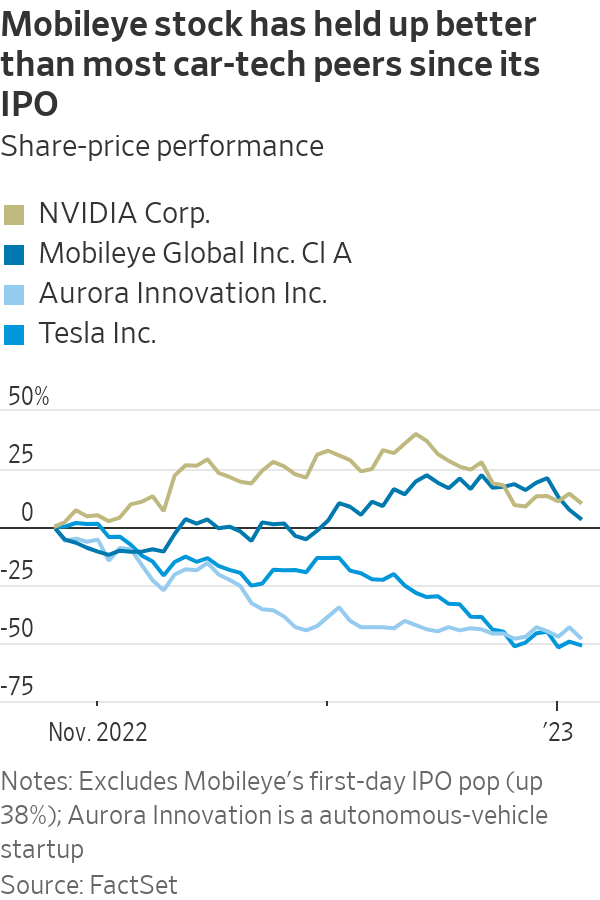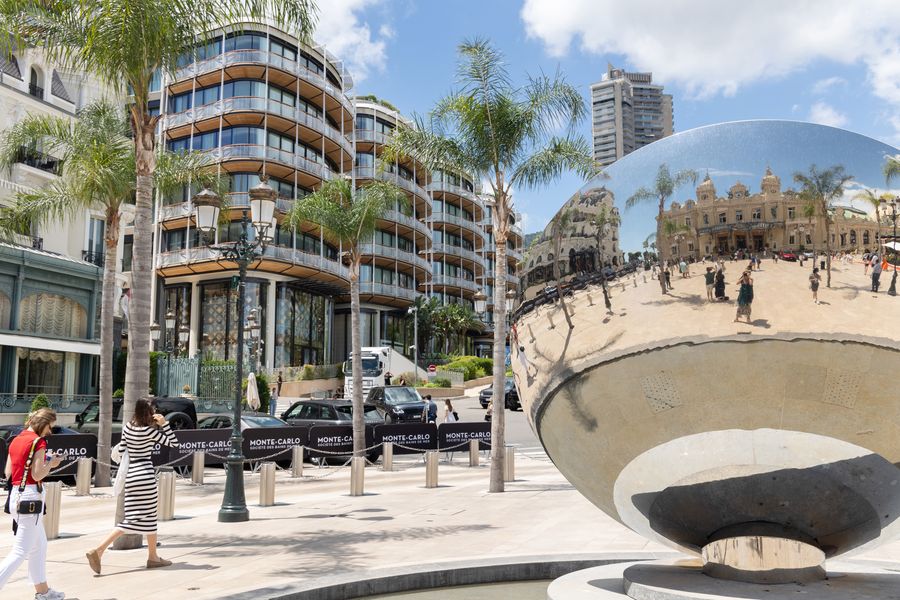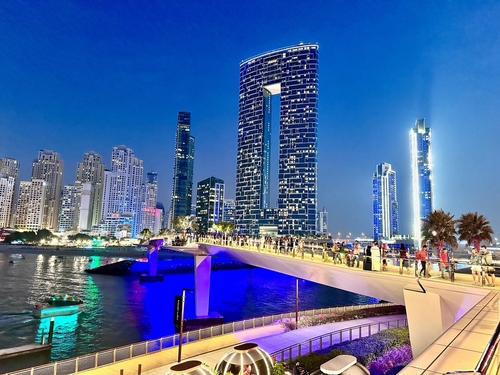You May Be Able to Buy a Self-Driving Car After All
Technology supplier Mobileye has articulated a credible path to vehicle autonomy, and unlike most peers can fund its way
A year ago, investors were wildly optimistic about the potential of automotive technologies such as automated driving. They now risk swinging to the opposite extreme.
Anyone looking for an idea of the cars that might be on sale in five years’ time likely found the news from this year’s CES in Las Vegas more muted than usual. Stellantis showed off new concept electric vehicles on Thursday, including a highly anticipated Ram pickup truck, but in reality it is playing catch-up with peers such as Ford and General Motors. Sony unveiled a brand for its new automotive joint venture with Honda, Afeela, but didn’t give many details of the much-hyped EV they expect to start selling in North America in 2026.
As Stellantis Chief Executive Officer Carlos Tavares pointed out in his keynote speech, more than $1 trillion of market value was wiped off automotive technology stocks last year. This isn’t just about Tesla: Shares in early-stage companies that don’t make profits have been even worse hit. That makes car makers understandably reticent about putting too much weight on—or money behind—the gizmos CES is best known for. Autonomous vehicles, the focus of much futurism in the industry, have taken a public beating, particularly since Ford and Volkswagen in October pulled the plug on their driverless-taxi joint venture.
Investors shouldn’t mistake the cautious turn in communication and funding for a lack of technological progress, though. Driverless taxis run by Alphabet’s Waymo and GM’s Cruise continue to roam the streets of San Francisco and Phoenix, albeit very cautiously and with strict limitations. The problem with these projects is that they are hugely expensive, with no proven business model or clear route to commercial scale. Unless this changes, they could suffer in a tighter financial environment.
Two Western companies above all make meaningful profits from the automation of driving today: Tesla and Israeli supplier Mobileye.
The former now charges $15,000 for its so-called “full self-driving” software package that automates most mundane driving tasks but, crucially, requires drivers to keep their eyes on the road as a backup. Tesla said late last month that 285,000 Tesla owners in North America had bought what it refers to as FSD, though far from all of them will have paid the latest price.
Mobileye, which was spun out of chip giant Intel last year through an initial public offering, has a comparable “eyes-on, hands-off” offering it calls SuperVision, in addition to the more basic assisted-driving technology that generates most of today’s profit. In an update at CES on Thursday, co-founder and CEO Amnon Shashua said SuperVision had a cumulative revenue pipeline of $3.5 billion through 2030, based on the production estimates of car makers that have included the technology in coming models.
Mr. Shashua also gave a levelheaded account of how Mobileye would move into the more adventurous realm of extended “eyes-off” autonomy, at least on and between highways. By adding a second sensor suite and then testing the finished product in an eyes-on “shadow” mode, Mobileye expects to deliver in 2026 the kind of provably safe automated driving that would actually give consumers time back. It said it already had “line of sight” toward $1.5 billion in revenue from one vehicle program that will likely include the product.
It is frustrating that Mobileye can’t yet reveal which brands are backing its latest products, beyond its Chinese launch partner Zeekr, but the supplier’s technological path to a more useful self-driving future seems much clearer than Tesla’s. The car maker run by Elon Musk has no plan to include backup sensors and doesn’t publish data on how often its system requires the human driver’s intervention—an approach unlikely to win over regulators or the broad public.
But the real appeal of Mobileye for investors is that it doesn’t demand an all-in bet on full autonomy: SuperVision and basic driver-assistance packages should underpin profitable growth for years. A forward earnings multiple of 44 times is ahead of 33 times for Nvidia, arguably its closest peer, but Mobileye should grow faster. Plus, a small premium doesn’t seem a big stretch for a company that could, maybe, let you read a book on your future commute.
 Copyright 2020, Dow Jones & Company, Inc. All Rights Reserved Worldwide. LEARN MORE
Copyright 2020, Dow Jones & Company, Inc. All Rights Reserved Worldwide. LEARN MORE
This stylish family home combines a classic palette and finishes with a flexible floorplan
Just 55 minutes from Sydney, make this your creative getaway located in the majestic Hawkesbury region.
As Paris makes its final preparations for the Olympic games, its residents are busy with their own—packing their suitcases, confirming their reservations, and getting out of town.
Worried about the hordes of crowds and overall chaos the Olympics could bring, Parisians are fleeing the city in droves and inundating resort cities around the country. Hotels and holiday rentals in some of France’s most popular vacation destinations—from the French Riviera in the south to the beaches of Normandy in the north—say they are expecting massive crowds this year in advance of the Olympics. The games will run from July 26-Aug. 1.
“It’s already a major holiday season for us, and beyond that, we have the Olympics,” says Stéphane Personeni, general manager of the Lily of the Valley hotel in Saint Tropez. “People began booking early this year.”
Personeni’s hotel typically has no issues filling its rooms each summer—by May of each year, the luxury hotel typically finds itself completely booked out for the months of July and August. But this year, the 53-room hotel began filling up for summer reservations in February.
“We told our regular guests that everything—hotels, apartments, villas—are going to be hard to find this summer,” Personeni says. His neighbours around Saint Tropez say they’re similarly booked up.
As of March, the online marketplace Gens de Confiance (“Trusted People”), saw a 50% increase in reservations from Parisians seeking vacation rentals outside the capital during the Olympics.
Already, August is a popular vacation time for the French. With a minimum of five weeks of vacation mandated by law, many decide to take the entire month off, renting out villas in beachside destinations for longer periods.
But beyond the typical August travel, the Olympics are having a real impact, says Bertille Marchal, a spokesperson for Gens de Confiance.
“We’ve seen nearly three times more reservations for the dates of the Olympics than the following two weeks,” Marchal says. “The increase is definitely linked to the Olympic Games.”

Getty Images
According to the site, the most sought-out vacation destinations are Morbihan and Loire-Atlantique, a seaside region in the northwest; le Var, a coastal area within the southeast of France along the Côte d’Azur; and the island of Corsica in the Mediterranean.
Meanwhile, the Olympics haven’t necessarily been a boon to foreign tourism in the country. Many tourists who might have otherwise come to France are avoiding it this year in favour of other European capitals. In Paris, demand for stays at high-end hotels has collapsed, with bookings down 50% in July compared to last year, according to UMIH Prestige, which represents hotels charging at least €800 ($865) a night for rooms.
Earlier this year, high-end restaurants and concierges said the Olympics might even be an opportunity to score a hard-get-seat at the city’s fine dining.
In the Occitanie region in southwest France, the overall number of reservations this summer hasn’t changed much from last year, says Vincent Gare, president of the regional tourism committee there.
“But looking further at the numbers, we do see an increase in the clientele coming from the Paris region,” Gare told Le Figaro, noting that the increase in reservations has fallen directly on the dates of the Olympic games.
Michel Barré, a retiree living in Paris’s Le Marais neighbourhood, is one of those opting for the beach rather than the opening ceremony. In January, he booked a stay in Normandy for two weeks.
“Even though it’s a major European capital, Paris is still a small city—it’s a massive effort to host all of these events,” Barré says. “The Olympics are going to be a mess.”
More than anything, he just wants some calm after an event-filled summer in Paris, which just before the Olympics experienced the drama of a snap election called by Macron.
“It’s been a hectic summer here,” he says.

AFP via Getty Images
Parisians—Barré included—feel that the city, by over-catering to its tourists, is driving out many residents.
Parts of the Seine—usually one of the most popular summertime hangout spots —have been closed off for weeks as the city installs bleachers and Olympics signage. In certain neighbourhoods, residents will need to scan a QR code with police to access their own apartments. And from the Olympics to Sept. 8, Paris is nearly doubling the price of transit tickets from €2.15 to €4 per ride.
The city’s clear willingness to capitalise on its tourists has motivated some residents to do the same. In March, the number of active Airbnb listings in Paris reached an all-time high as hosts rushed to list their apartments. Listings grew 40% from the same time last year, according to the company.
With their regular clients taking off, Parisian restaurants and merchants are complaining that business is down.
“Are there any Parisians left in Paris?” Alaine Fontaine, president of the restaurant industry association, told the radio station Franceinfo on Sunday. “For the last three weeks, there haven’t been any here.”
Still, for all the talk of those leaving, there are plenty who have decided to stick around.
Jay Swanson, an American expat and YouTuber, can’t imagine leaving during the Olympics—he secured his tickets to see ping pong and volleyball last year. He’s also less concerned about the crowds and road closures than others, having just put together a series of videos explaining how to navigate Paris during the games.
“It’s been 100 years since the Games came to Paris; when else will we get a chance to host the world like this?” Swanson says. “So many Parisians are leaving and tourism is down, so not only will it be quiet but the only people left will be here for a party.”
This stylish family home combines a classic palette and finishes with a flexible floorplan
Just 55 minutes from Sydney, make this your creative getaway located in the majestic Hawkesbury region.























